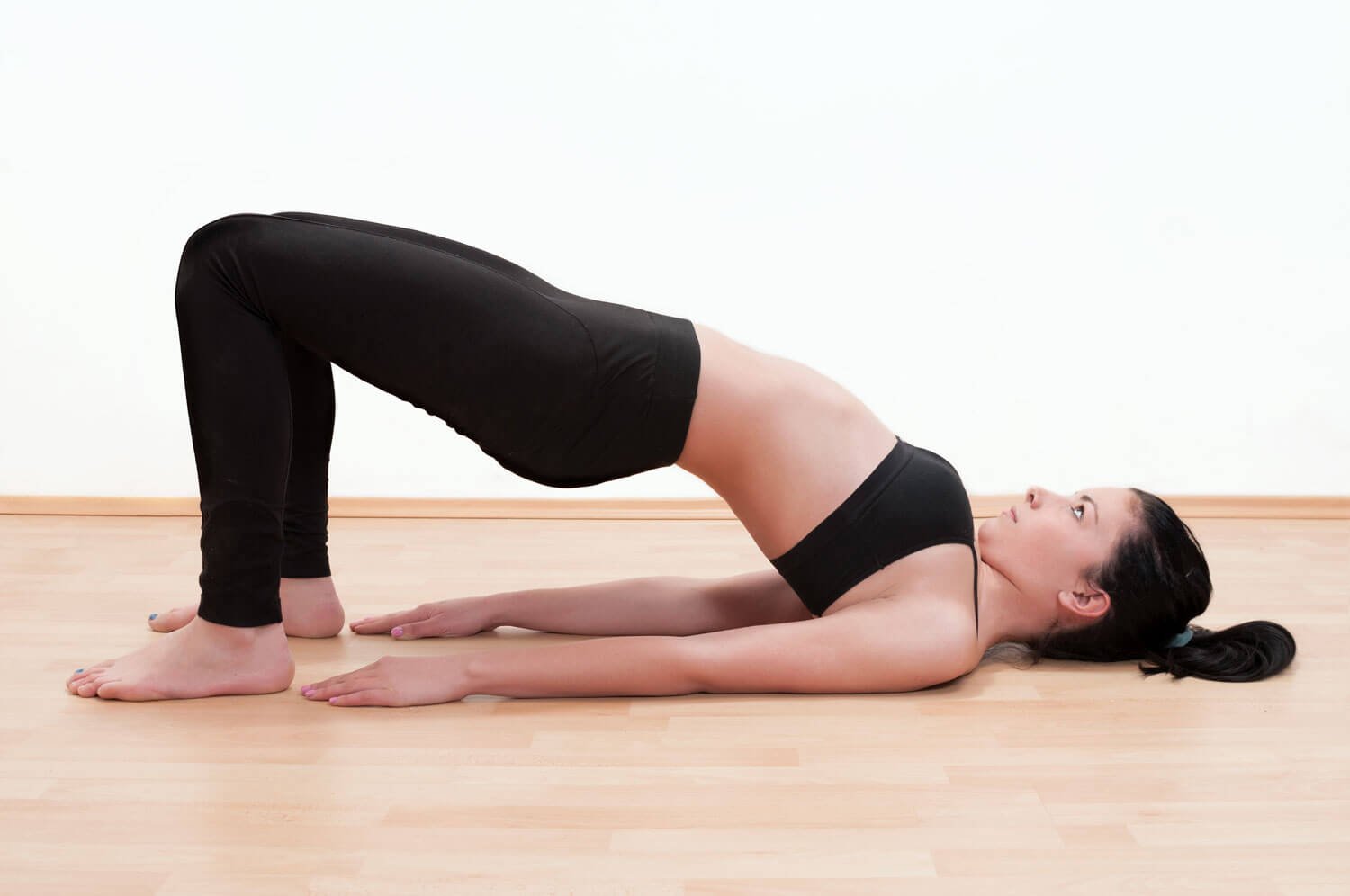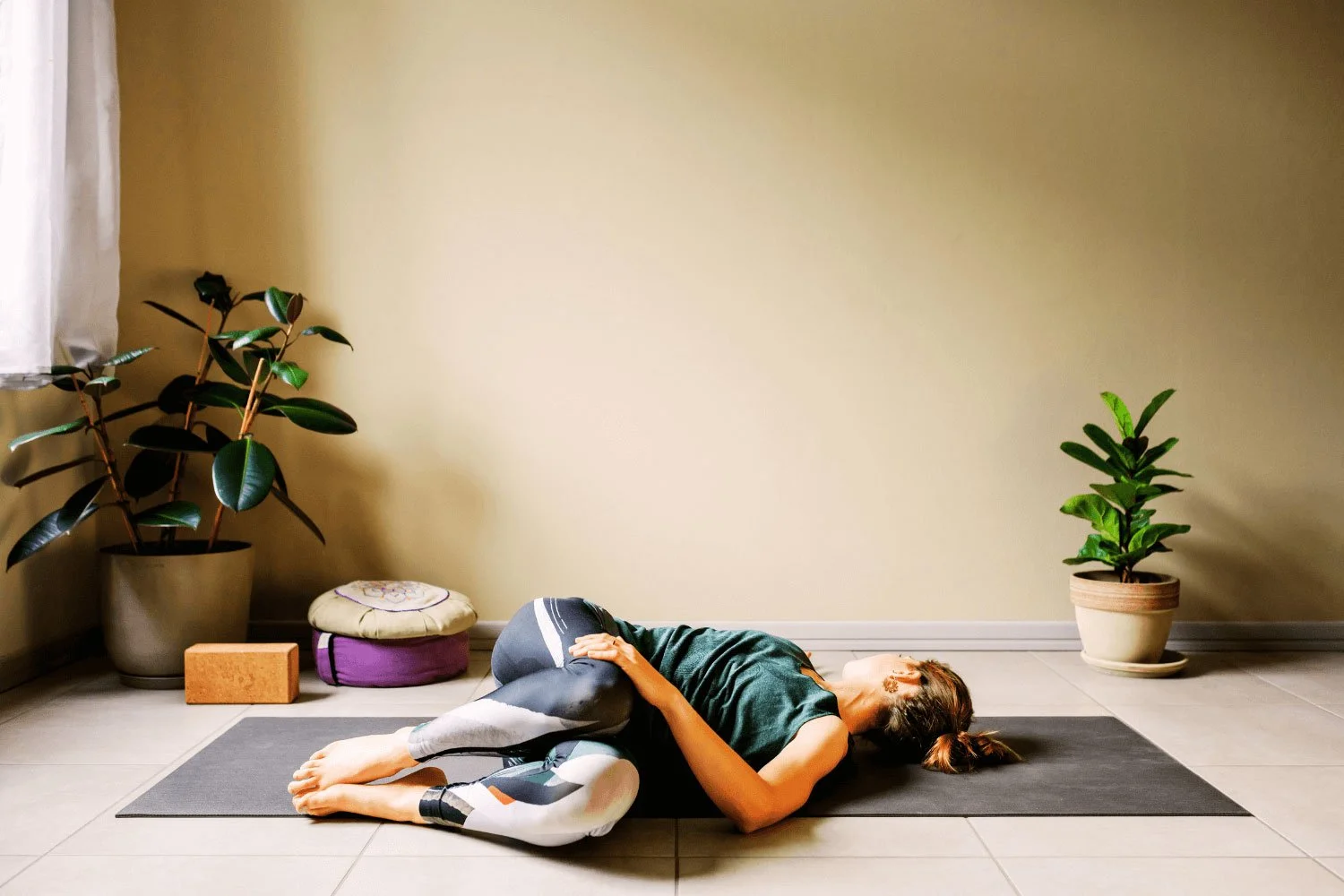7 Gentle Yoga Poses to Relieve Low Back Pain
Low back pain affects millions of people—whether from long hours at a desk, poor posture, or physical strain. Fortunately, you don’t need to turn to medication right away. A consistent yoga practice can help relieve pain, reduce tension, and build strength where it matters most. Below are 7 beginner-friendly yoga poses you can safely try at home to ease lower back discomfort.
A woman in Child’s Pose with her knees bent, arms stretched out in front, and forehead resting on the mat—demonstrating a basic, restful yoga position for relaxation and stretching the back.
1. What Is Child’s Pose and How Does It Help Lower Back Pain?
Child’s Pose (Balasana)
Child’s Pose helps relieve lower back pain by gently stretching the spine and hips, while promoting relaxation and releasing tension.
How to do it:
• Kneel with your big toes touching and knees wide apart.
• Sit back on your heels and fold forward, extending arms in front of you.
• Rest your forehead on the mat. Stay here for 1–3 minutes, breathing deeply.
Starting position of Cat-Cow Pose — the back is arched downward, chest lifted, and gaze forward.
Second position — the spine is rounded upward, chin tucked, and abdomen drawn in.
2. How Does the Cat-Cow Stretch Improve Spine Flexibility?
Cat-Cow Stretch (Marjaryasana-Bitilasana)
The Cat-Cow Stretch improves spine flexibility by gently mobilizing the vertebrae, increasing circulation, and promoting a greater range of motion.
How to do it:
• Start in a tabletop position on hands and knees.
• Inhale: arch your back, lift your chest and tailbone (Cow).
• Exhale: round your spine, tuck your chin and pelvis (Cat).
• Repeat slowly for 1–2 minutes.
Downward Facing Dog Pose — the body forms an inverted “V” shape, with hands and feet grounded, hips lifted, and spine extended for a full-body stretch.
3. Can Downward-Facing Dog Help Decompress the Lower Back?
Downward-Facing Dog (Adho Mukha Svanasana)
Yes, Downward-Facing Dog helps decompress the lower back by lengthening the spine and relieving built-up tension through gentle traction.
How to do it:
• From tabletop, lift your hips up and back.
• Press heels toward the ground, fingers wide and firm.
• Hold for 30 seconds to 1 minute. Slightly bend knees if hamstrings are tight.
Sphinx Pose — the forearms rest on the mat, elbows under shoulders, chest gently lifted, and legs extended straight back, creating a mild backbend that supports the lower spine.
4. What Are the Benefits of Sphinx Pose for Back Support?
Sphinx Pose
Sphinx Pose supports back health by gently strengthening the lower back muscles and encouraging proper spinal alignment through a mild, accessible backbend.
How to do it:
• Lie on your belly with forearms on the ground, elbows under shoulders.
• Lift your chest, keeping your hips grounded.
• Hold for 1–2 minutes while breathing slowly.
5. How Do Supine Twists Help Relieve Back Tension?
Supine Twist (Supta Matsyendrasana)
Supine Twists relieve back tension by gently stretching the spine and surrounding muscles, enhancing flexibility and releasing built-up stress.
How to do it:
• Lie on your back, hug your knees to your chest.
• Drop your knees to the right while turning your head to the left.
• Hold for 1–2 minutes, then switch sides.
Bridge Pose — lying on the back with knees bent and feet flat on the mat, hips lifted toward the ceiling, engaging the glutes and opening the chest while grounding through the shoulders and arms.
6. How Can Bridge Pose Strengthen Lower Back Muscles?
Bridge Pose (Setu Bandhasana)
Bridge Pose strengthens the glutes and lower back muscles, providing essential support and stability for the spine.
How to do it:
• Lie on your back with feet flat and knees bent.
• Press into your feet and lift your hips.
• Option: clasp hands under your back. Hold for 30 seconds.
Legs Up the Wall Pose — lying on the back with legs extended vertically against a wall, allowing the body to relax and promote circulation, gentle inversion, and recovery.
7. Why Is Legs-Up-the-Wall One of the Best Poses for Back Relief?
Legs-Up-the-Wall (Viparita Karani)
Legs-Up-the-Wall is one of the best poses for back relief because it gently reduces pressure on the spine while promoting relaxation and circulation.
How to do it:
• Sit sideways by a wall and swing your legs up as you lie back.
• Rest your arms by your sides, palms up.
• Stay for 5–10 minutes.
💡 Final Tip:
Yoga is most effective when practiced consistently and gently. Move slowly, breathe deeply, and stop if something doesn’t feel right. If pain persists, consult a professional.
Recommended Reads:
For further reading, see: Check out this guide on Yoga for Pain Relief for more tips.
Check Out These products
We earn a small commission from Amazon links—at no extra cost to you—which helps support our work. Thanks for your support!








